
Piper Lolot in Vietnam: Guide and Culinary Uses
Piper lolot is a familiar herb in Vietnam, often used to add flavor to traditional dishes. In this article, we’ll explore its characteristics, how it’s grown across Vietnam, the flavorful ways this aromatic leaf is used to elevate Vietnamese dishes, and how to store it for year-round use.
What is piper lolot?
Growing and harvesting
Culinary uses
Storage guide
FAQs
What is piper lolot?
Overview
 Vietnamese name: La lot
Vietnamese name: La lot Shape and appearance: Piper lolot grows up to 40–50 cm tall with vibrant green, heart-shaped leaves. Under favorable conditions, it can reach up to one meter tall.
Shape and appearance: Piper lolot grows up to 40–50 cm tall with vibrant green, heart-shaped leaves. Under favorable conditions, it can reach up to one meter tall. Flavor profile: Mildly spicy with a subtle tingling sensation on the tongue and a hint of bitterness.
Flavor profile: Mildly spicy with a subtle tingling sensation on the tongue and a hint of bitterness.  How to enjoy it: Stir-fry with beef, wrap seasoned beef or pork in the leaves for frying or grilling, add them to soups, or mix into omelets for extra flavor.
How to enjoy it: Stir-fry with beef, wrap seasoned beef or pork in the leaves for frying or grilling, add them to soups, or mix into omelets for extra flavor. Harvest season: Piper lolot can be grown and harvested year-round in Vietnam.
Harvest season: Piper lolot can be grown and harvested year-round in Vietnam. 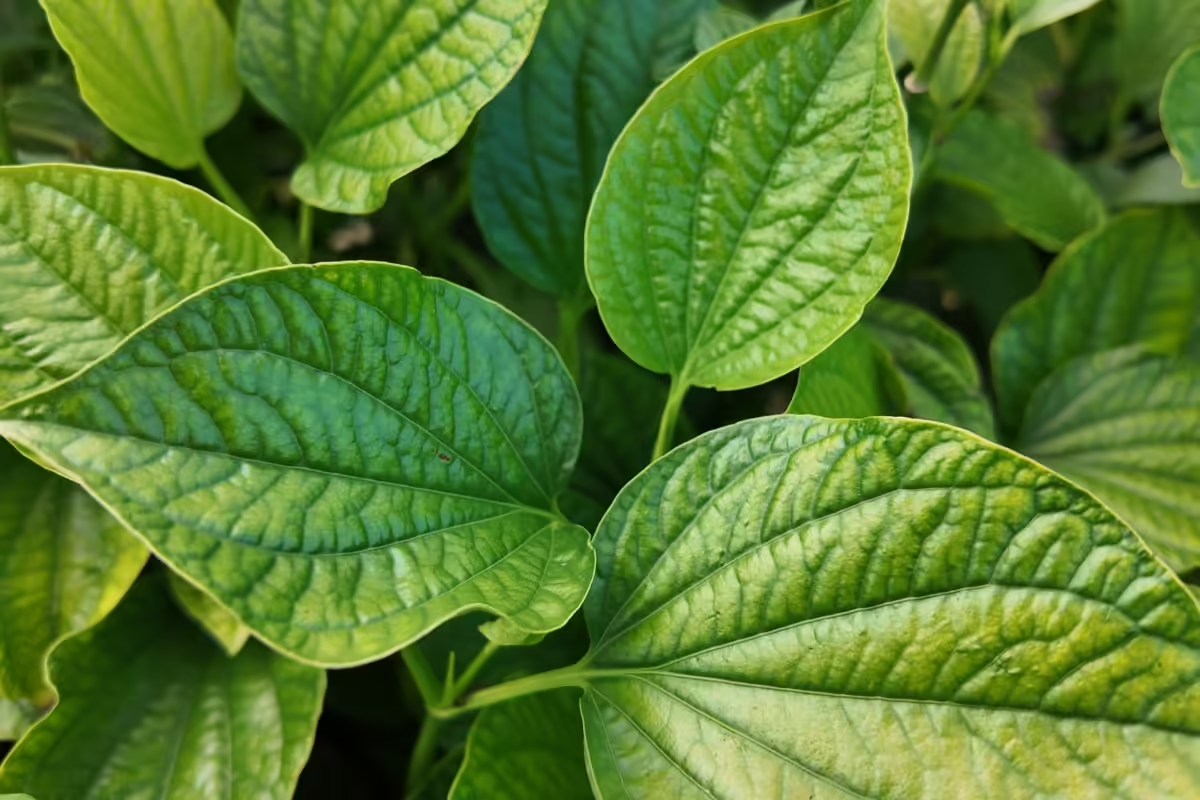
Characteristics of piper lolot
Leaves
The leaves grow singly and turn darker green as they mature. They are heart-shaped, typically 8 to 10 cm wide and 10 to 15 cm long, with distinct veins. The underside of the leaf is lighter in color than the top surface.
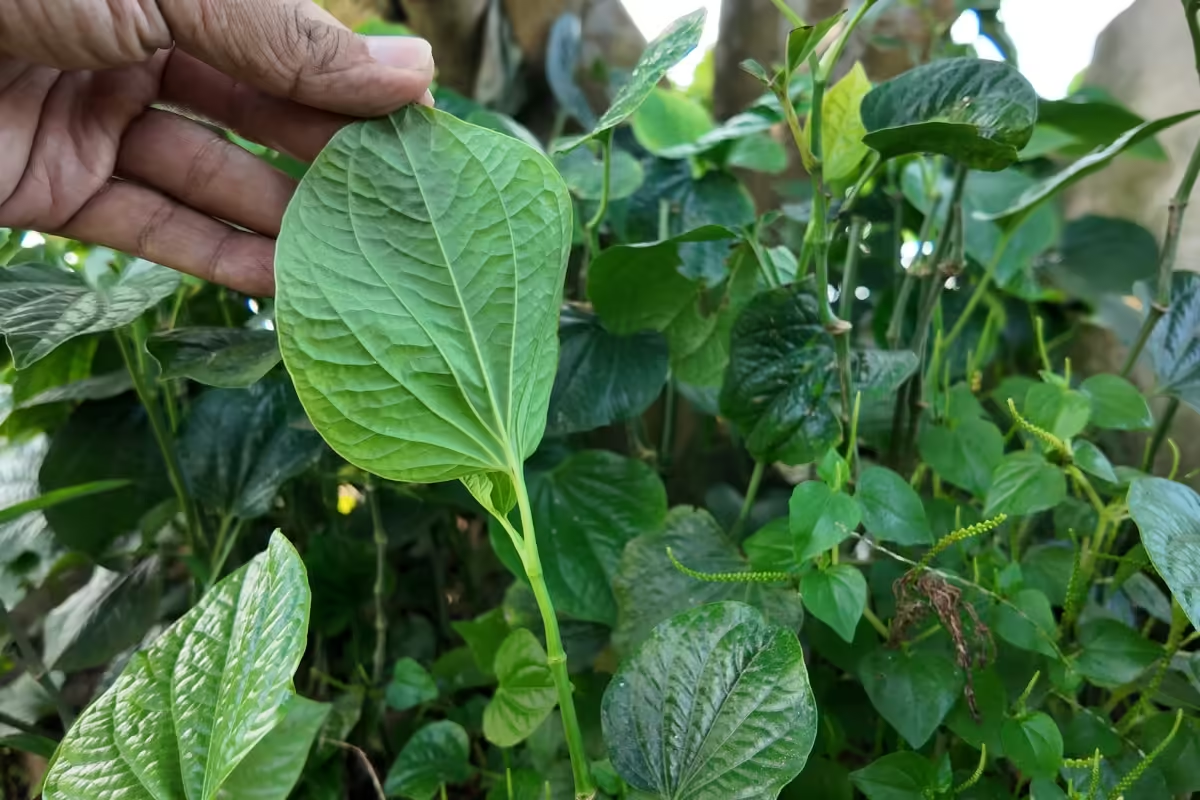
The lighter underside of a piper lolot leaf with distinct veins.
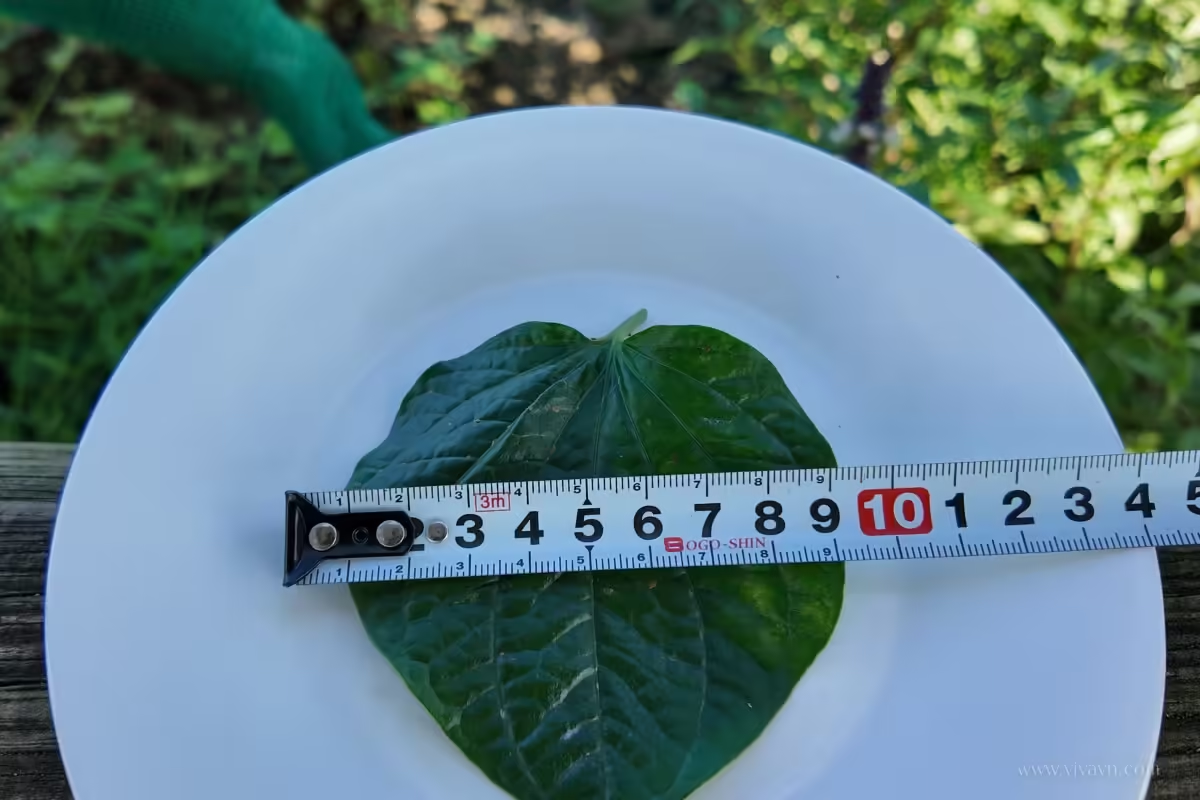
Measuring the width of a piper lolot leaf
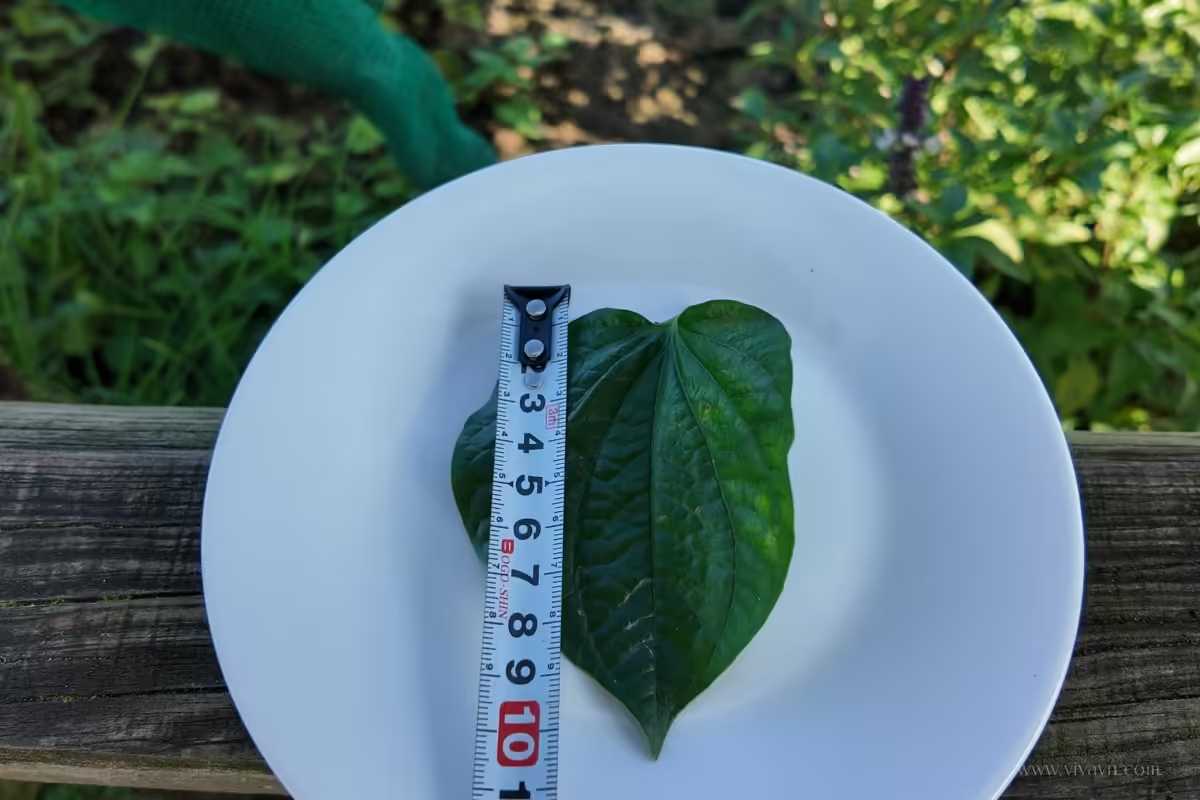
Measuring the length of a piper lolot leaf
Stems
The stems of piper lolot are soft and green, divided into short segments. The plant often grows in clusters or spreads along the ground, and under favorable conditions, it can reach up to one meter tall.
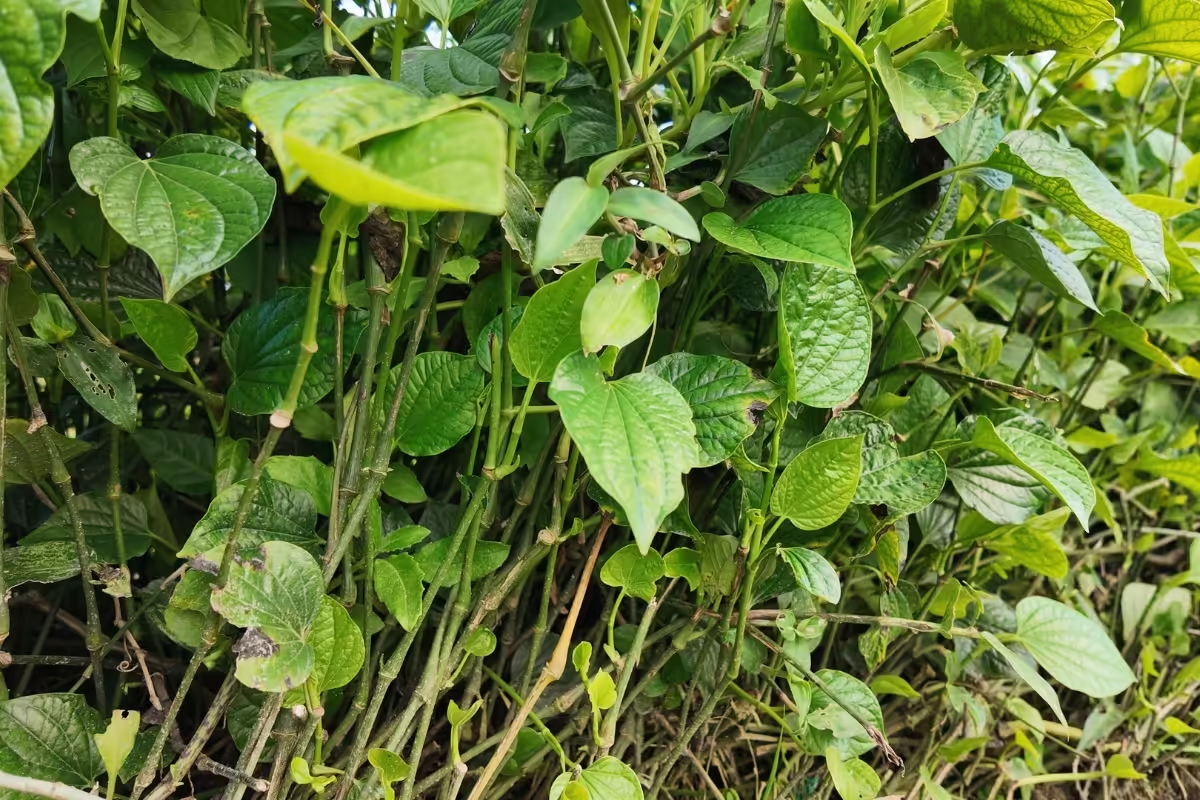
Green stems of piper lolot plants
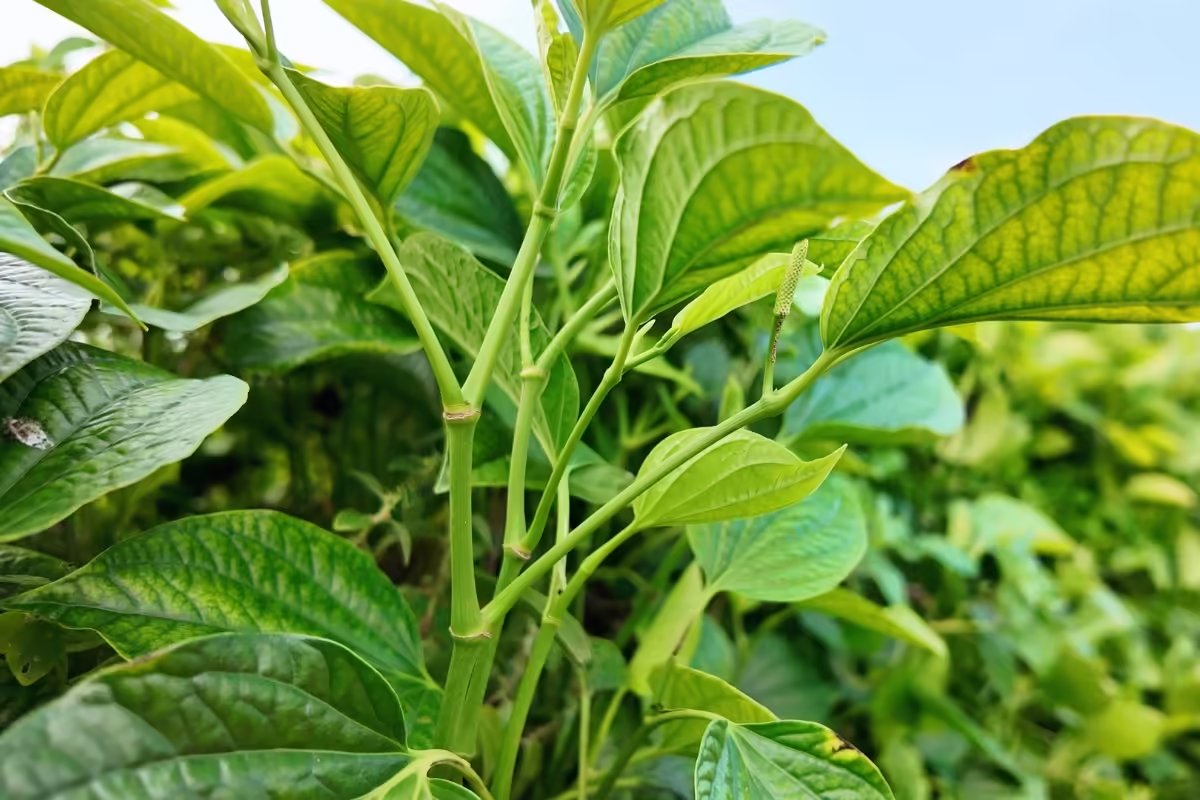
Close-up of the soft, segmented stem of a piper lolot plant.
Flowers
Piper lolot produces small, white flowers that grow singly on slender stems about 2 to 3 cm long. These simple flowers often appear at the ends of stems or near the leaf bases.
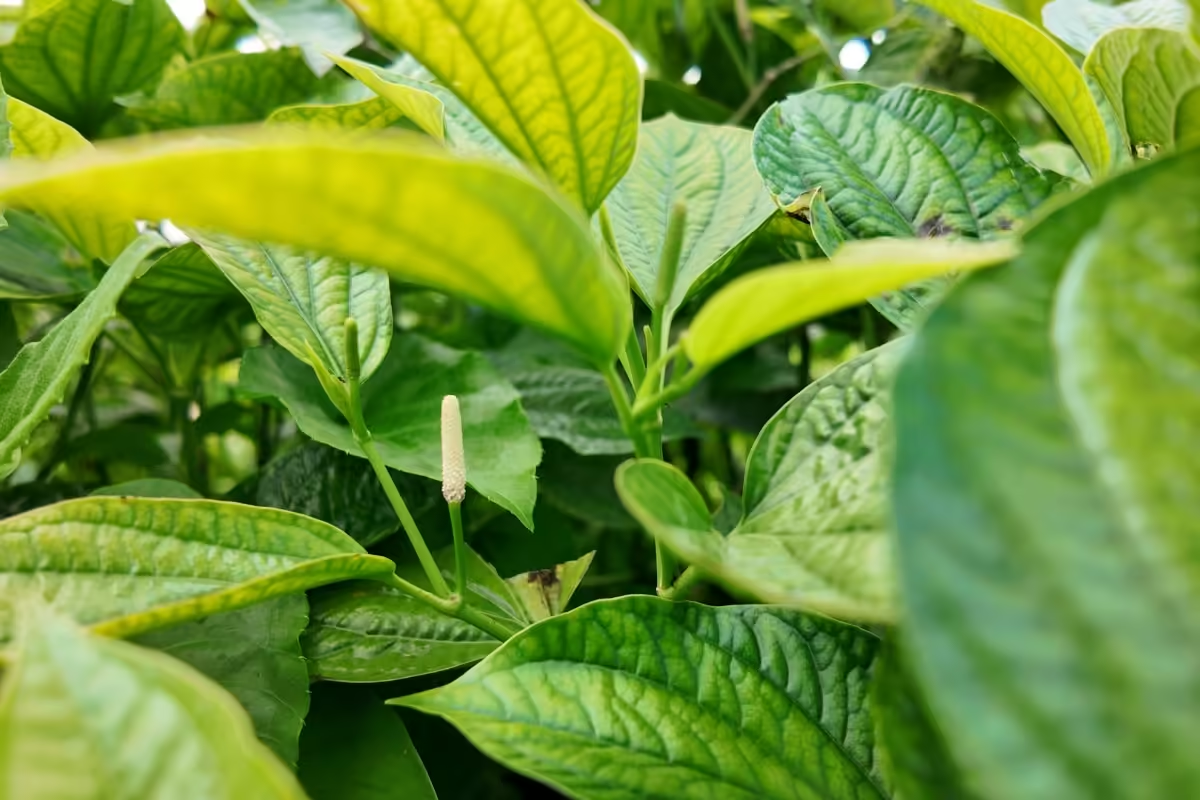
A small, delicate white piper lolot flower growing alone on a thin stem.
Aroma and flavor
When you pick a fresh piper lolot leaf and taste it, you’ll notice a mild spiciness with a subtle tingling on the tongue and a slight hint of bitterness. But when added to hot dishes, its aroma becomes wonderfully fragrant, which is why it’s often used in Vietnamese grilled dishes, stir-fries, and soups.
Don’t confuse piper lolot with betel leaves
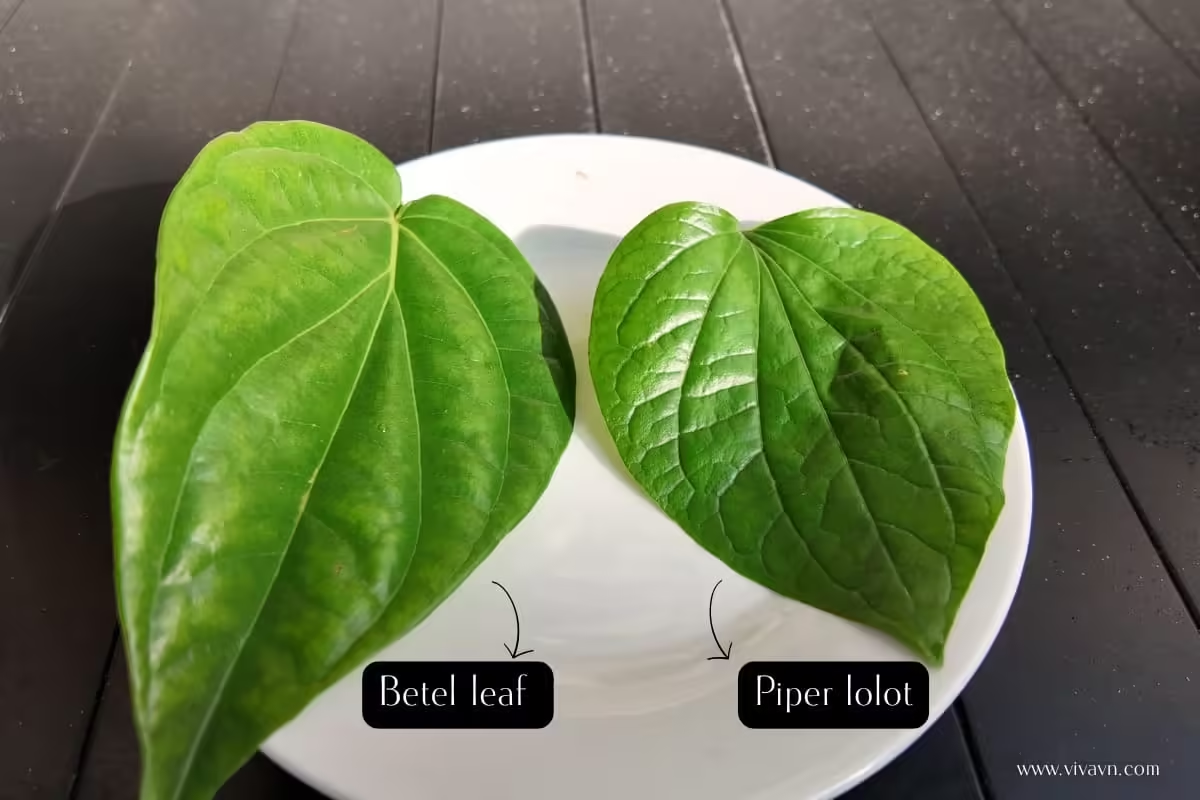
Piper lolot leaves and betel leaves may look quite similar at first glance, but they have some distinct differences. Both leaves are deep green and heart-shaped, but betel leaf is longer, narrower, and glossier, while piper lolot is shorter, rounder, and has a softer, matte texture. The betel plant is a climbing vine, whereas piper lolot grows as a low, bushy plant. In Vietnam, betel leaves are traditionally used for chewing with areca nuts rather than for cooking. Among Vietnamese herbs, piper lolot is valued for its pleasant fragrance and is a popular choice for enhancing the flavor of various dishes.
Growing and harvesting piper lolot in Vietnam
Growing
Piper lolot loves shady, damp spots and often grows best beneath the shelter of larger plants or trees. The easiest way to grow it is by using stem cuttings. Simply take a 20 to 30 cm section of the stem, let it develop roots, and then plant it directly into the soil.
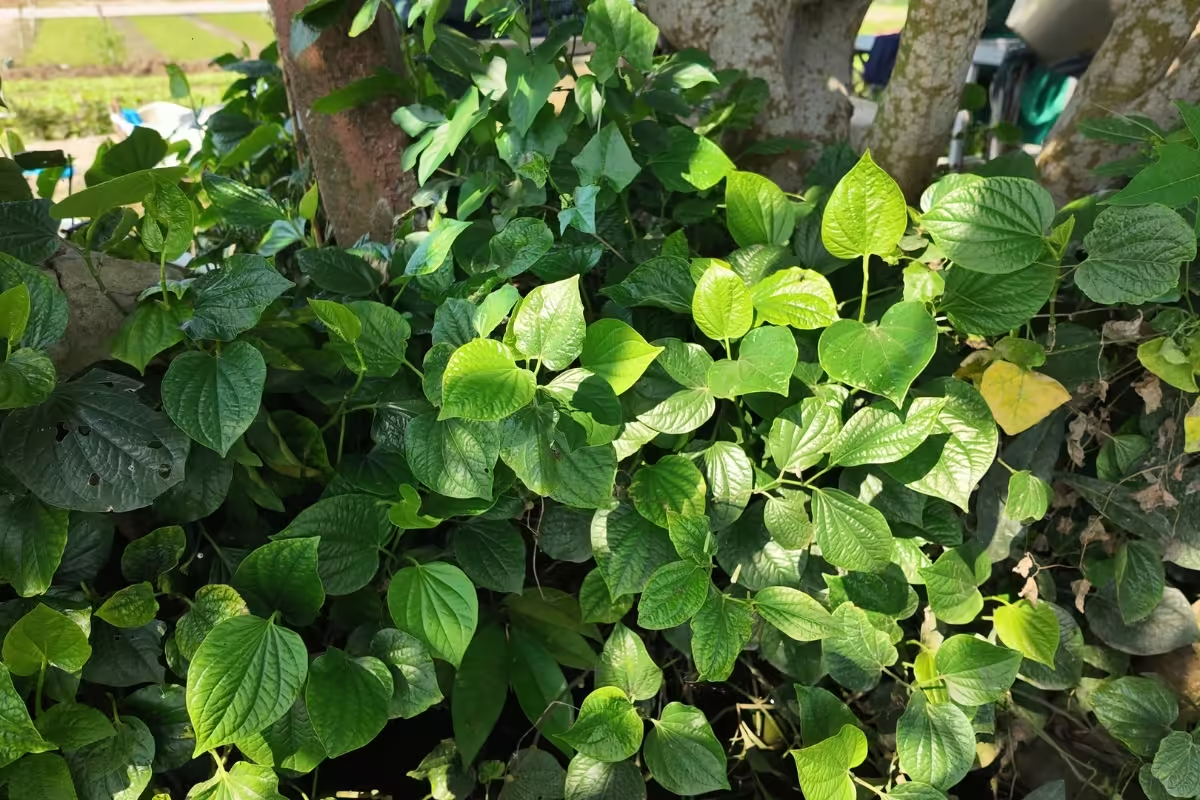
Piper lolot grows naturally in a shaded, damp area beneath taller plants.
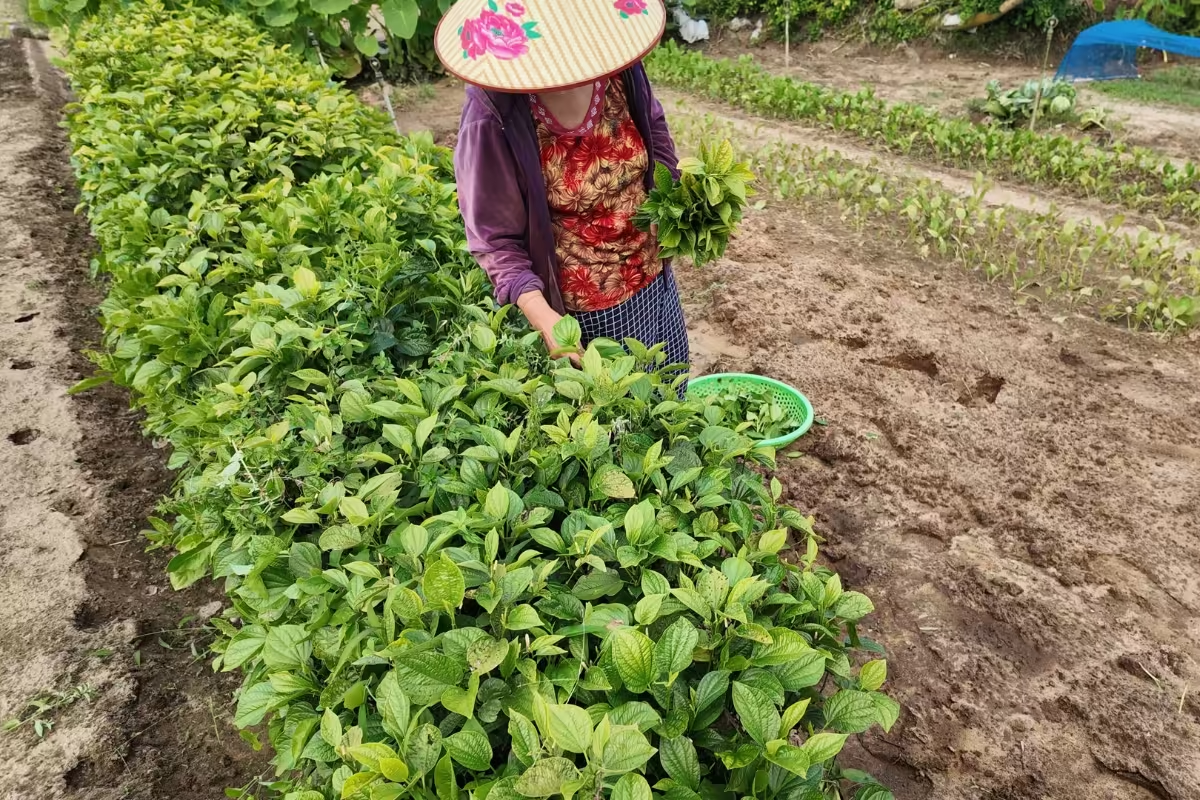
A single row of piper lolot plants thriving in a garden.
Harvesting
Piper lolot can be harvested about 30 days after planting. You can either cut the upper stems or simply pick individual leaves. After harvesting, the plant continues to grow and produces new leaves, allowing for multiple harvests throughout the season.
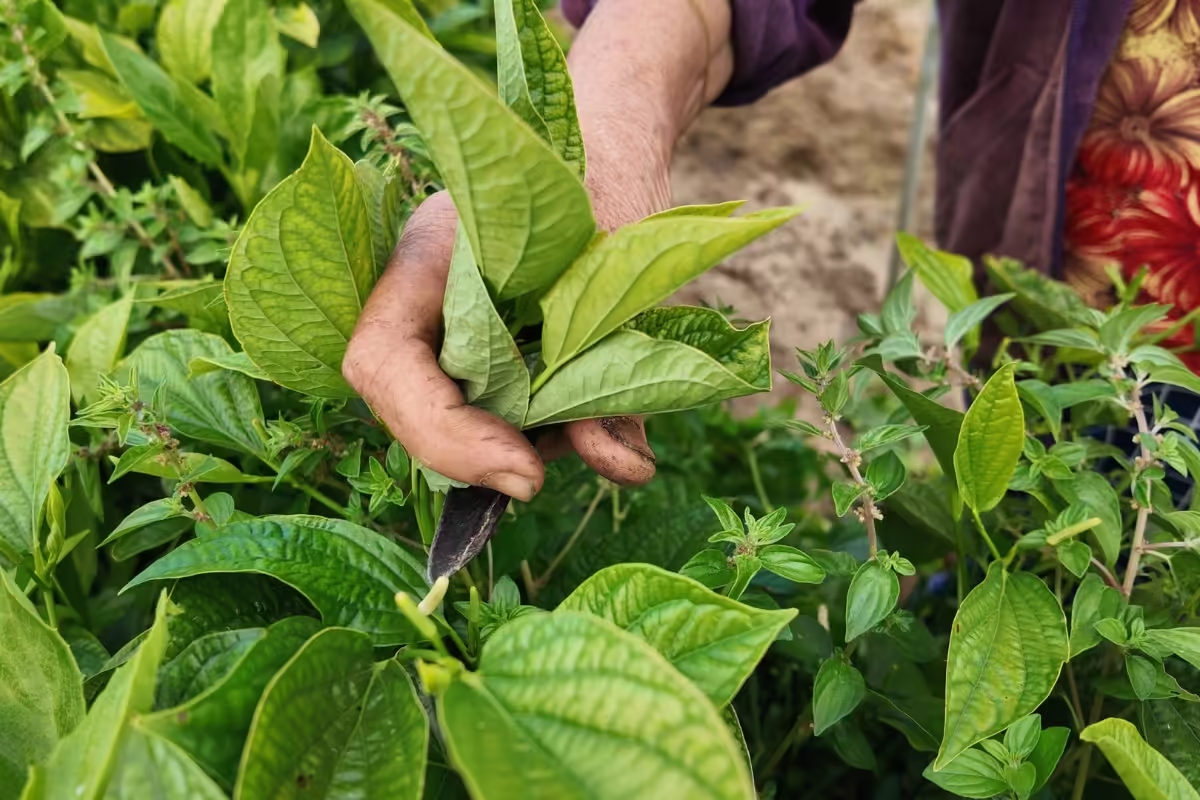
Harvesting piper lolot leaves by hand with a small knife
Culinary uses of piper lolot
Beef stir-fry with piper lolot leaves (bo xao la lot)
For this quick and flavorful stir-fry, thin slices of beef are marinated with Vietnamese seasonings. The beef is then sautéed in butter until nearly cooked, and just before finishing, chopped piper lolot leaves are added. The result is a wonderfully fragrant dish with bold flavors that instantly awaken the appetite.

A savory Vietnamese dish—beef stir-fried with piper lolot leaves for a bold herbal aroma.
Vietnamese omelet with piper lolot leaves (trung chien la lot)
This rustic dish combines beaten eggs with minced pork, finely chopped piper lolot leaves, shallots, and traditional seasonings. The mixture is pan-fried until golden, resulting in a fragrant omelet with green herbs and tender bits of pork—perfect for serving with steamed rice.

Vietnamese omelet with piper lolot leaves—fragrant, flavorful, and perfect with steamed rice.
Vietnamese grilled beef in lolot leaves (bo nuong la lot)
Vietnamese grilled beef in lolot leaves is a flavorful Vietnamese dish where ground beef is seasoned with ingredients like minced shallots, garlic, black pepper, cooking oil, salt, and a touch of seasoning powder. The mixture is then wrapped in fresh piper lolot leaves and grilled to perfection. As the leaves char slightly, they release a unique herbal aroma that infuses the beef with rich, savory flavors.
In northern Vietnam, a popular variation of this dish uses ground pork instead of beef, and it’s known as cha la lot.
How to store piper lolot leaves for year-round use
If you want to enjoy the distinct aroma of piper lolot leaves even when they’re out of season, here’s a simple and effective way to store them fresh for months:
 Harvest and sort: Select large, healthy leaves for storage.
Harvest and sort: Select large, healthy leaves for storage. Clean and dry: Rinse the leaves gently and pat them dry with paper towels. Make sure they are completely dry before storing.
Clean and dry: Rinse the leaves gently and pat them dry with paper towels. Make sure they are completely dry before storing. Stack and pack: Neatly stack the leaves with stems aligned and pack them in airtight zip-lock bags. You can portion about 30 leaves per bag for easy use later.
Stack and pack: Neatly stack the leaves with stems aligned and pack them in airtight zip-lock bags. You can portion about 30 leaves per bag for easy use later. Freeze for long-term storage: Place the bags in the freezer. The leaves will become soft when thawed, but remain flavorful.
Freeze for long-term storage: Place the bags in the freezer. The leaves will become soft when thawed, but remain flavorful.Frequently asked questions about piper lolot
What is piper lolot?
Piper lolot is a tropical herb with heart-shaped leaves and a mild, peppery flavor. In Vietnamese cooking, it’s used to wrap seasoned meat for grilling or added to stir-fries and soups for a pleasant herbal aroma.
Can I grow piper lolot at home?
Yes, you can grow piper lolot at home. It thrives in shady, moist areas and can be easily propagated using stem cuttings. With regular watering and well-drained soil, the plant grows well in both garden beds and pots.
What is piper lolot used for in cooking?
Piper lolot is used in Vietnamese cooking to add a unique herbal aroma and mild peppery flavor. Common uses include:
- Wrapping seasoned beef or pork for grilling or frying.
- Adding to stir-fries for extra flavor.
- Mixing into omelets for a fragrant herbal touch.
- Using fresh in soups.
Can piper lolot leaves be eaten raw?
Yes, piper lolot leaves can be eaten raw. But when cooked, especially in grilled, stir-fried, or hot soup dishes, they release a stronger, more aromatic flavor that enhances the dish.
How do you store fresh piper lolot leaves?
To keep them fresh for longer:
- Rinse gently and pat dry completely.
- Stack neatly and pack in zip-lock bags.
- Freeze for long-term storage.
- Thaw and use directly in cooking; the leaves stay flavorful.
Share on FacebookShare on X (Twitter)Share on PinterestShare on WhatsappShare on LinkedinShare on TelegramShare on Email
- https://www.youtube.com/@VivaVNOfficial
- https://www.facebook.com/vivavnofficial2024
- https://www.pinterest.com/vivavnofficial/
© 2025 VivaVN. All rights reserved.


Leave a Reply